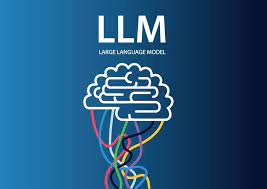Beyond Text Generation: The Versatile Capabilities of Large Language Models
While large language models (LLMs) and generative AI have dominated the conversation over the past year, the spotlight has largely been on their text generation capabilities. There’s no denying the value of LLMs in generating answers to questions. However, focusing solely on this use case overlooks other valuable applications. This insight will explore several primary uses of LLMs, ensuring you recognize their broader potential beyond just generative purposes.
Creation and Generation
This is the most publicized use case for LLMs today. Applications like ChatGPT can answer questions with detailed responses, and tools like DALL-E generate images based on user prompts. Similar generators exist for code, video, and 3D virtual worlds. Interestingly, these generators share fundamental algorithmic approaches despite producing different content types—text, images, videos. Since they all process prompts, they require training to understand and decompose these prompts to guide the generation process, necessitating the use of LLMs. However, generating new content is just one aspect of what LLMs can achieve.
Summarization
LLMs excel at summarizing information. For instance, if you have a list of papers on your to-read list, an LLM can summarize their key themes, common points, and differences. This provides a clear baseline, helping you focus on essential aspects as you read. Summarizing content with AI tends to have a lower error risk compared to generating new content because the LLM works within the boundaries of the provided information. While it might occasionally miss a pattern or emphasize the wrong details, it’s unlikely to produce completely incorrect summaries.
Translation
Often underrated, translation might be one of the most impactful uses of LLMs. For example, LLMs can translate old code from obsolete languages into modern ones. An LLM generates a draft translation, which, although imperfect, can be refined by a programmer who understands the goal of the code even with limited knowledge of the original language. Human language translation also stands to benefit significantly. Soon, we’ll be able to communicate in our preferred languages, with LLMs instantly translating our words into the listener’s language. This will eliminate the need for a common language and help preserve uncommon languages by removing the communication barriers associated with them.
Interpretation and Extraction
LLMs are also adept at interpreting statements and triggering subsequent actions. Image generators use this approach, as do tools that handle analytical queries. For instance, asking “Please summarize this year’s sales by region and subtotal by product” allows an LLM to interpret the request, extract key parameters, and pass them to a query generator for the answer. Companies like Quaeris, which I advise, focus on this capability.
Additionally, LLMs can handle tasks like sentiment analysis and customer service inquiries. They can ingest inquiries and extract relevant details, such as the product in question, the issue raised, and the requested action, to route the inquiry to the appropriate person more effectively.
LLMs Beyond Generative AI
The examples discussed are not exhaustive but represent some common and powerful uses of LLMs. They highlight that LLMs offer far more than just text generation. Exploring these other applications can provide significant benefits for you and your organization.
Originally posted in the Analytics Matters newsletter on LinkedIn.













